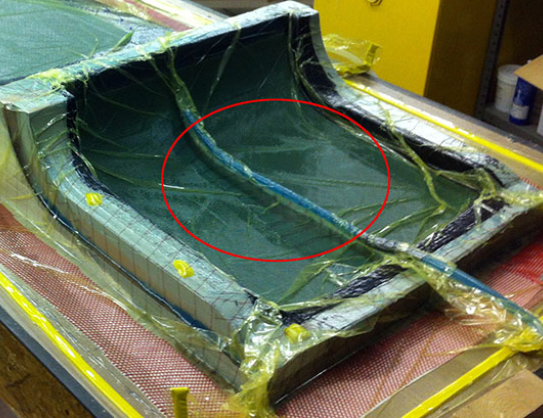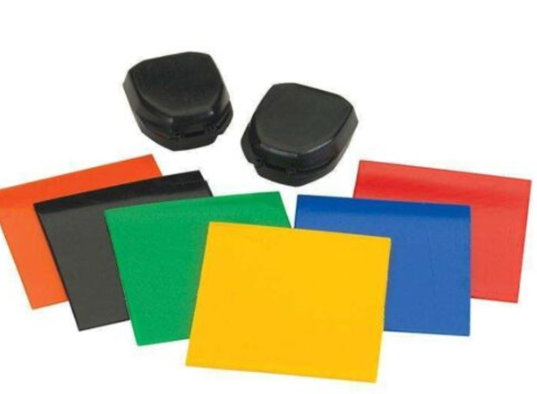Light gauge vacuum-formed resin is ideal for lightweight, cost-effective, and versatile product packaging and components.
Manufacturing Process of Light Gauge Vacuum-Formed Resins
The manufacturing process of light gauge vacuum-formed resins is a crucial aspect in a wide range of industries, known for its efficiency and versatility. This process transforms plastic resin into lightweight, durable products through a series of well-defined steps.

Vacuum Forming Techniques
Vacuum forming, a simplified version of thermoforming, uses heat and pressure to shape plastic resin into various forms. The process begins with heating a plastic sheet until it becomes pliable. The heated sheet then stretches over a mold. A vacuum removes air between the plastic sheet and the mold, ensuring the plastic conforms precisely to the mold’s shape. The cooling phase solidifies the resin, retaining the desired form. This technique is particularly effective for producing large quantities of uniform parts with minimal material wastage.
Material Preparation and Tooling
Preparation of materials is a critical step. Selecting the right resin type, such as polystyrene, polyethylene, or acrylic, impacts the final product’s quality, durability, and aesthetic appeal. The resin’s thickness and grade play a significant role in determining its suitability for specific applications. Tooling, on the other hand, involves creating molds that define the shape and dimensions of the final product. Molds can be made from various materials, including aluminum and wood, each offering unique advantages in terms of cost, longevity, and precision.
Post-Processing and Finishing
After the vacuum forming process, post-processing involves trimming excess material to achieve the precise dimensions and shape. Techniques like sawing, routing, and die-cutting are common. Finishing touches might include painting, screen printing, or applying texture to enhance the product’s appearance and functionality. The post-processing phase is also where quality control measures are rigorously applied to ensure each product meets the specified standards in terms of durability, appearance, and performance.
Application Scenarios for Light Gauge Vacuum-Formed Resins
Light gauge vacuum-formed resins have become increasingly popular in various industries due to their versatility, cost-effectiveness, and efficiency. These materials are particularly favored for their lightweight properties, durability, and adaptability to different shapes and sizes. Below are some key application scenarios:
Consumer Products and Packaging
Consumer Products: In the realm of consumer goods, these resins are extensively used to create lightweight, durable products ranging from toys to household items. Their adaptability allows for intricate designs and vibrant colors, enhancing the aesthetic appeal of products. The cost of producing these items is relatively low, making them accessible to a broad consumer base. For instance, the manufacturing cost of a standard vacuum-formed toy can be significantly less than traditional plastic molding methods, sometimes as much as 30-40% cheaper.
Packaging: Packaging is another domain where light gauge vacuum-formed resins shine. They provide sturdy, yet lightweight packaging solutions for a wide array of products. This type of packaging is particularly beneficial for sensitive items such as electronics, where protection during transport is paramount. The cost-effectiveness of this material also allows businesses to reduce packaging expenses, which can constitute a significant portion of the product’s overall cost.
Medical and Healthcare Equipment
Medical Devices: In the healthcare sector, these resins are used for manufacturing various medical devices and components, such as trays and containers for sterilization processes. The material’s resistance to chemicals and its ability to be sterilized make it ideal for medical applications. Additionally, the lightweight nature of these materials eases the handling and transportation of medical equipment, a crucial factor in emergency and mobile healthcare services.
Healthcare Equipment: Hospital and clinic interiors often incorporate vacuum-formed resin components due to their ease of cleaning and maintenance. These materials also offer flexibility in design, which is vital for customizing medical equipment to fit specific needs and spaces. The cost savings in manufacturing these components are significant, often reducing the production cost by up to 25% compared to alternative materials.
Automotive Components
Interior Components: In the automotive industry, light gauge vacuum-formed resins are widely used for interior components such as dashboards, door panels, and consoles. These materials contribute to reducing the overall weight of the vehicle, which directly impacts fuel efficiency and emission levels. For example, replacing traditional materials with vacuum-formed resins can lead to a reduction in vehicle weight by up to 10%, significantly enhancing fuel efficiency.
Exterior Parts: Exterior automotive parts like grilles and body panels also benefit from the use of these resins. They offer durability and resistance to impact, essential for exterior vehicle components. The cost of manufacturing these parts is competitive, often resulting in a reduction of production expenses by approximately 20-30% compared to conventional materials.
Design Considerations in Using Light Gauge Vacuum-Formed Resins
When designing products using light gauge vacuum-formed resins, several key factors come into play. These include selecting the appropriate material, considering structural and aesthetic aspects, and ensuring durability and performance. Each of these elements plays a critical role in the success of the final product.
Material Selection Criteria
Types of Resins: Choosing the right resin is crucial. Commonly used resins include ABS (Acrylonitrile Butadiene Styrene), polycarbonate, and PVC (Polyvinyl Chloride). Each type offers different properties: ABS is known for its toughness and impact resistance; polycarbonate for its clarity and heat resistance; and PVC for its flexibility and chemical resistance.
Cost Implications: The cost of resin varies widely. For instance, polycarbonate is generally more expensive than ABS, with prices ranging from 20% to 40% higher. This cost factor must align with the budget and the desired profit margins of the product.
Environmental Considerations: Environmental impact is another critical aspect. PVC, for example, raises concerns due to its chlorine content, while ABS is more environmentally friendly. Manufacturers must balance environmental concerns with material performance.
Structural and Aesthetic Aspects
Design Flexibility: Vacuum-formed resins offer great design flexibility. They can be molded into complex shapes and sizes, accommodating intricate designs. This flexibility, however, must be balanced with structural integrity to ensure the product can withstand intended use.
Aesthetics: The aesthetic appeal of the product is equally important. Resins can be colored, textured, or made transparent to enhance visual appeal. For example, the use of transparent polycarbonate can add an elegant look to consumer electronics, whereas textured ABS can provide a rugged, durable appearance for industrial tools.
Durability and Performance Factors
Impact Resistance and Strength: The choice of resin impacts the product’s durability. ABS, known for its high impact resistance, is suitable for products that require toughness, such as protective gear or automotive parts.
Lifespan and Wear: The expected lifespan of the product is a critical consideration. Vacuum-formed products can last anywhere from a few years to over a decade, depending on the material used and the conditions of use. For example, UV-stabilized polycarbonate can extend the lifespan of outdoor products due to its resistance to sun damage.
Performance under Conditions: The product’s performance under various conditions, such as temperature extremes and chemical exposure, is essential. PVC, for instance, performs well in chemical-rich environments, making it ideal for medical devices.

Case Studies: Successful Implementations of Light Gauge Vacuum-Formed Resins
The use of light gauge vacuum-formed resins has led to significant advancements in various industries. These case studies highlight the successful implementation of this technology in packaging, medical device manufacturing, and the automotive sector.
Innovative Packaging Solutions
- Electronics Packaging: A major electronics manufacturer switched to vacuum-formed polystyrene trays for packaging its components. This change resulted in:
- A 25% reduction in packaging weight, enhancing transport efficiency.
- Improved protection for delicate components, reducing damage during shipping by approximately 15%.
- A cost saving of 20% compared to previous packaging materials.
- Food Industry Packaging: A food company introduced vacuum-formed PET (Polyethylene Terephthalate) containers for its ready-to-eat meals. Benefits included:
- Extended shelf life due to better sealing capabilities.
- Enhanced aesthetic appeal, increasing customer satisfaction.
- A 30% reduction in packaging costs.
Breakthroughs in Medical Device Manufacturing
- Sterilization Trays for Surgical Instruments: A medical device company developed vacuum-formed ABS trays for sterilizing surgical instruments. Key advantages were:
- Increased durability, with the trays lasting up to 5 years under regular use.
- Improved chemical resistance, essential for sterilization processes.
- Cost efficiency, with production costs being 40% lower than alternative materials.
- Customized Prosthetics: Vacuum-formed resin was used to create lightweight, custom-fitted prosthetics. This innovation brought:
- Enhanced comfort for patients due to better fit and reduced weight.
- A significant reduction in manufacturing time, from weeks to days.
- A decrease in production costs by 50%, making prosthetics more accessible.
Automotive Industry Applications
- Lightweight Interior Panels: An automotive manufacturer used vacuum-formed ABS panels for its vehicle interiors. This led to:
- A 10% reduction in overall vehicle weight, contributing to better fuel efficiency.
- A 20% cost saving in interior panel production.
- Improved design flexibility, allowing for more ergonomic and aesthetic interiors.
- Durable Exterior Parts: The use of vacuum-formed polycarbonate for exterior vehicle components, such as bumpers and grilles, provided:
- Enhanced impact resistance, improving vehicle safety.
- Reduction in manufacturing costs by 30% compared to traditional materials.
- Improved resistance to environmental factors, extending the lifespan of exterior parts.




